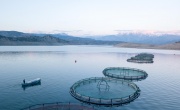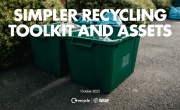UKWIN warns incinerator GHG emissions often worse than predicted
The United Kingdom Without Incineration Network (UKWIN) has released a guide of good practice, which evaluates the greenhouse gas (GHG) emissions of waste incineration.
The ‘Good Practice Guidance for Assessing the GHG Impacts of Waste Incineration’ is designed to be used within climate assessments, conceived as a solution to the ‘inconsistencies’ in incinerator carbon evaluations.
 The guide presents 10 recommendations of best practice, established from an in-depth review of the approaches currently being used within the waste industry.
The guide presents 10 recommendations of best practice, established from an in-depth review of the approaches currently being used within the waste industry.
These suggestions span several areas: considering the role of landfill as a biogenic carbon sink; factoring in the decarbonisation of the electricity supply; retracting ‘low carbon’ claims; and removing compostable and reusable material from incinerator feedstock, amongst others.
The research from UKWIN found that incinerators perform ‘significantly worse’ in practice than in the models devised during the planning stage.
According to the report, on average, the proportion of CO2 that was fossil CO2 was 13 percentage points higher than predicted at the planning or permitting stage – a lower proportion of the energy generated was considered 'renewable' and a higher proportion of the energy was considered 'fossil derived’.
UKWIN also found that incinerators often dispense ‘lower levels of electricity generation’, which, when considered with these reported higher levels of fossil CO2 emissions, signifies a higher carbon intensity than promoters of incineration schemes would claim.
As the report states, the fossil carbon intensity of electricity exported to the grid was, on average, around 49 per cent higher than predicted by the applicant at the planning or permitting stage.
The report states incineration is also often packaged as a more sustainable solution to landfill, but, making reference to biogenic carbon sinks, counters that landfill can operate as an ‘imperfect carbon capture and storage facility’ whereas EfW plants cannot.
The UKWIN report goes on to suggest that the incineration of one tonne of carbon releases 3.667 tonnes of CO2, meaning that every tonne of biogenic carbon in the landfill sink avoids the release of 3.667 tonnes of CO2 when compared to incineration.
As a result, UKWIN situates incineration alongside landfill as a practice from which we should move away.
According to statistics from the Department of Environment, Food and Rural Affairs (Defra), the total greenhouse gas emissions from waste incineration accounted for around 1.4 per cent (6.47 million tonnes of carbon dioxide equivalent) of the UK’s non-biogenic greenhouse gas emissions in 2019.
Of this, about 6.19 million tonnes of fossil carbon dioxide equivalent was emitted from EfW plants.
Guide author Josh Dowen, Associate Coordinator of the United Kingdom Without Incineration Network (UKWIN), commented: "Building new incinerators costs hundreds of millions of pounds, locking us into burning waste for decades to come.
“It is therefore essential that those assessing proposals for new incineration capacity take account of the full climate impacts and opportunity costs."
Camilla Zerr, Plastics campaigner at Friends of the Earth, said: “Plastic is one of the main materials sent to incinerators, creating significant quantities of climate-wrecking carbon dioxide when burnt.
“And because incinerators need huge quantities of waste to keep them going, there is little incentive to reduce the amount created in the first place."
"This good practice guide provides valuable information about how to account for the climate harm being caused by waste incineration, strengthening the case for turning off the plastic tap.”
“A joined-up approach to the waste crisis is urgently needed, including legally-binding targets to reduce the amount of plastic created each year.”
Janek Vahk, Climate, Energy, and Air Pollution Programme Coordinator at Zero Waste Europe, said: "Zero Waste Europe welcomes this guidance for assessing the climate harm caused by waste incineration.
“The findings are in line with our experience of incineration hampering the decarbonisation of the electricity supply and being a backwards step in the journey to zero waste and the circular economy."







